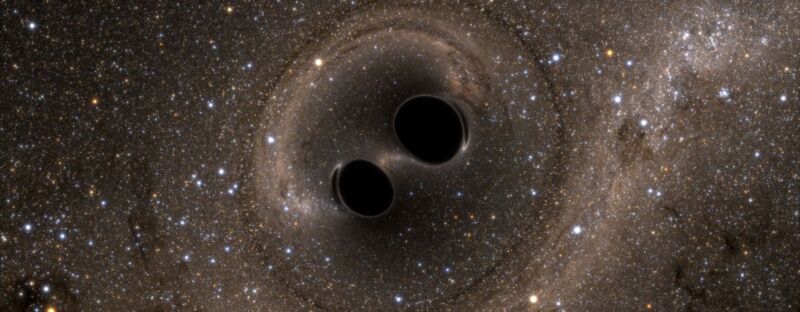Strange black hole merger may have been a rare random encounter

Enlarge / Simulation of two black holes poised on the verge of a collision. (credit: Simulating eXtreme Spacetimes (SXS) project)
The advent of gravitational wave detectors-there are now four of them-has recorded a steady flow of black hole mergers. As far as we can tell, almost all of them have behaved exactly as we would expect for the sorts of events that we had predicted would produce them: a pair of orbiting black holes that gradually spiral inward until they meet at their mutual center of gravity.
But there was one event that apparently didn't quite match the sorts of signals we would expect. And researchers are now suggesting it was the product of something that should be incredibly rare: two black holes finding each other in the vastness of space. After a single close pass, the two bodies curved around and immediately swung into a collision.
Templates and chirpsBlack hole collisions require that the two black holes be close enough to each other to gravitationally interact. Since space is so vast, this would typically mean that they are the products of two massive stars that formed as a binary system. After the stars died and left black holes behind, the two bodies would slowly spiral in toward each other, radiating away energy in the form of gravitational waves as they do.